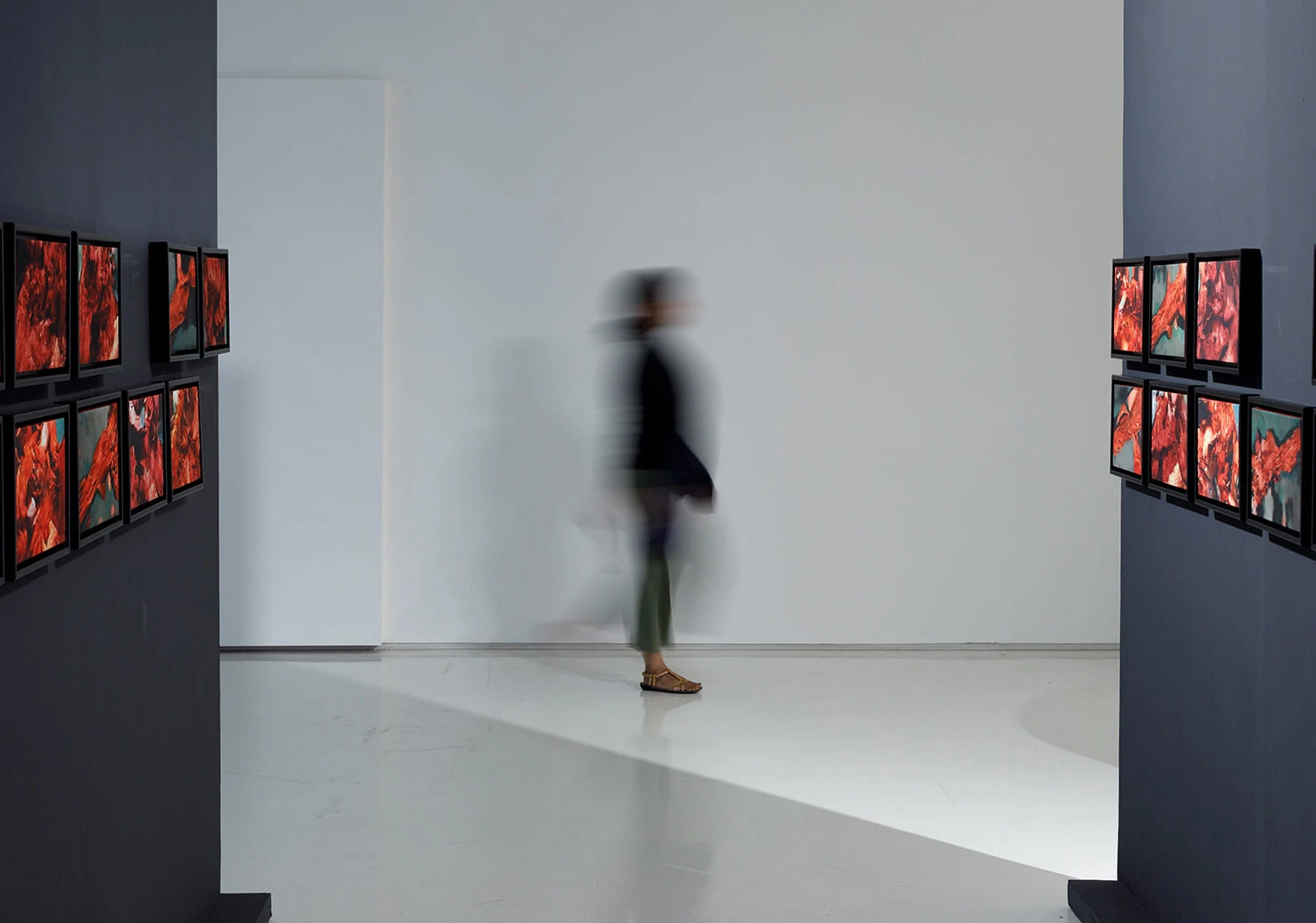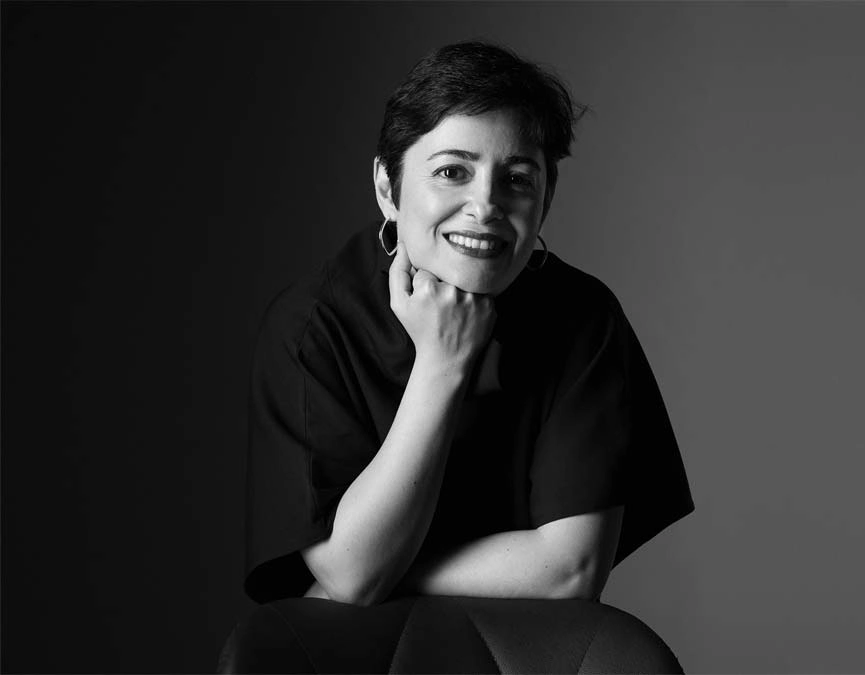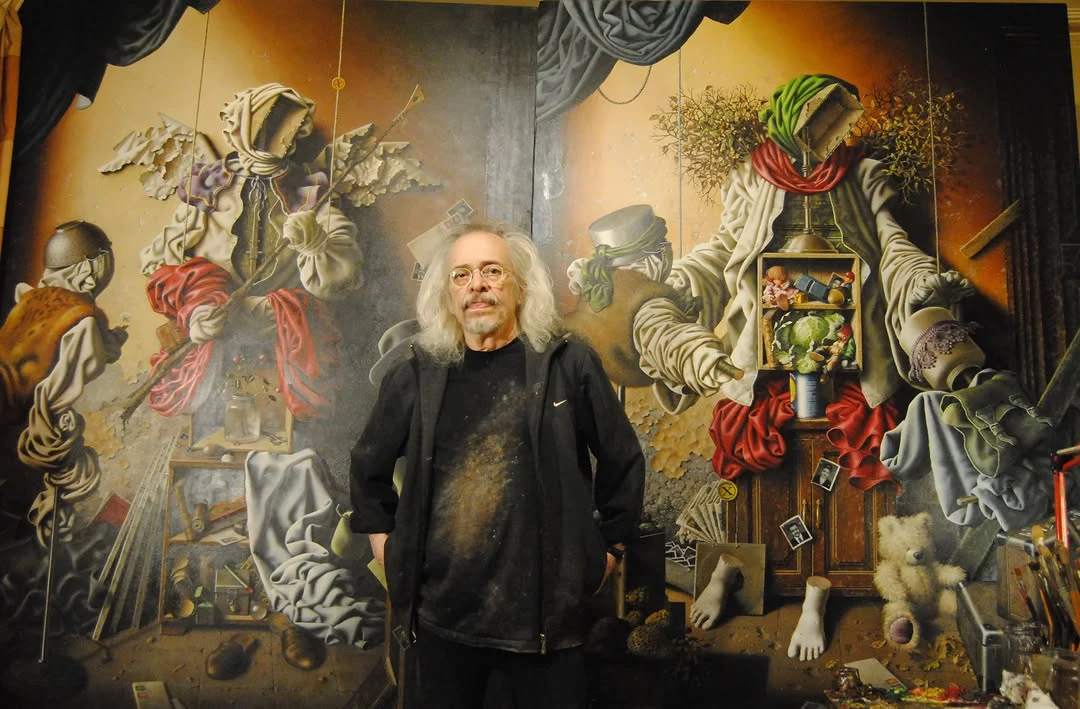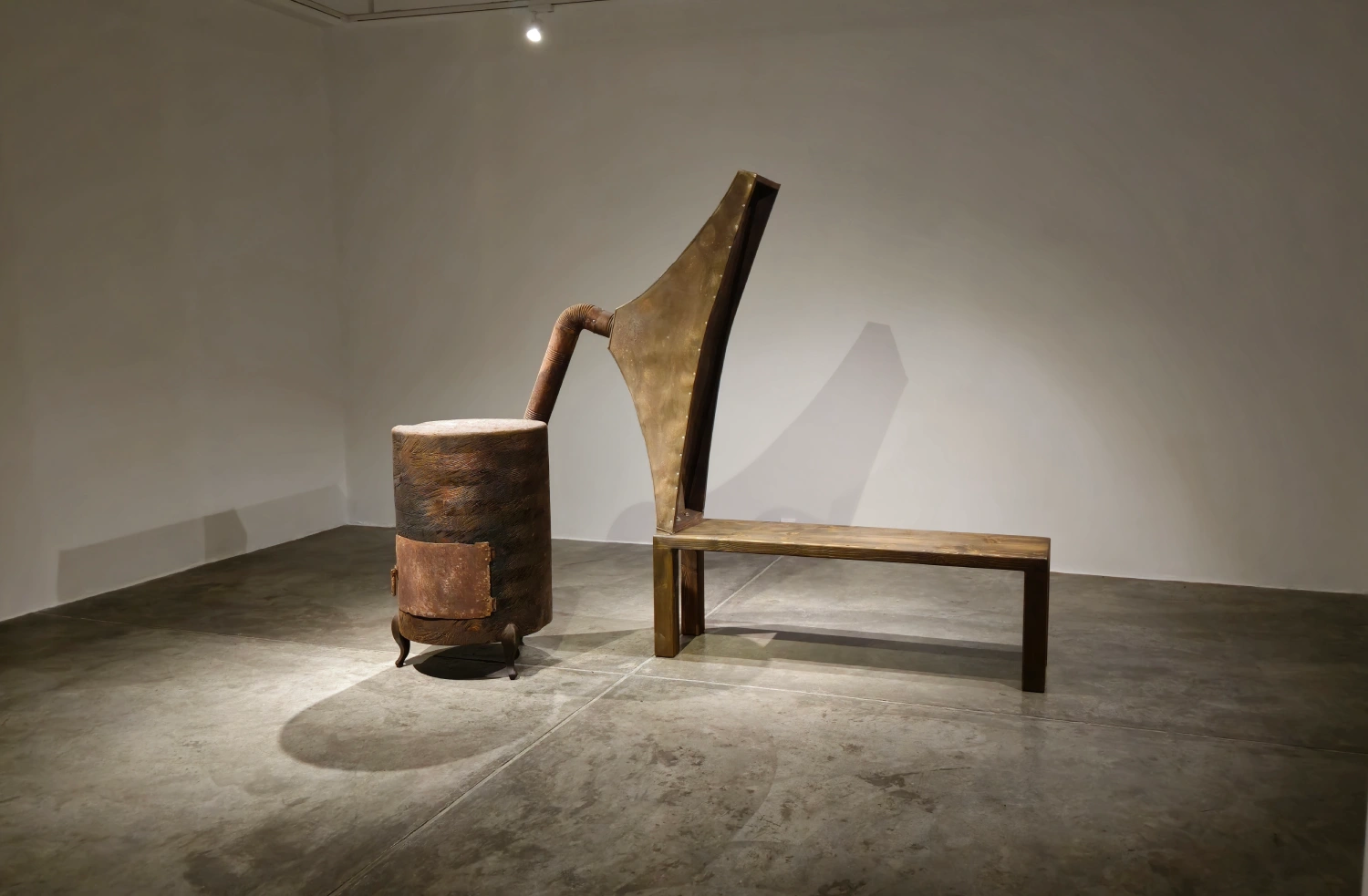Contemporary Iran in a Visual Bricolage
The Niyan Gallery, located in the heart of Tehran as a dynamic and vibrant artistic space, has hosted one of the prominent paintings of Elham Heidarpour. This group exhibition, titled Your Iran, provided an exceptional opportunity to view the works of contemporary artists. Elham Heidarpour, an artist who has been professionally engaged in painting for nearly 15 years, was among the participants. The Niyan Gallery created an environment where art, history, and society intertwine, inviting the audience on a profound journey into national themes. This exhibition not only showcases artworks but also fosters dialogue about contemporary social and cultural issues in Iran. Visitors were also given the opportunity to interact with the artists regarding their creative processes and inspirations.
Elham Heidarpour’s Visual Space
Elham Heidarpour’s work is primarily symbolic, rooted in objective forms while being shaped by social, cultural, and current societal issues. Through her paintings, she narrates stories embedded within her society. With a deep observation of her surroundings, Heidarpour invites the audience to reflect on the space of her work. Her paintings explore themes such as freedom, tradition, national identity, and ideology as central motifs, conveyed through symbols imprinted in the collective visual memory of the audience. For instance, her use of the Azadi Tower-a symbol of homeland appears in her painting. This tower, alongside the theme of freedom, helps convey the artist’s concerns within the painting. The arched frame at the top of the painting, combined with a dark gray background, immerses the viewer in a surge of national memory within contemporary history. What the audience sees is a form initially constructed by Heidarpour and then rendered as a painting. In fact, her creative process involves multiple stages, including both painting and sculpture.[1] In this way, Heidarpour seeks to establish an emotional connection between her work and the audience, encouraging them to explore their own identity and that of their society. By employing color techniques that create structural depth in her paintings, she depicts profound human emotions and invites viewers to contemplate themes such as national identity, cultural heritage, and social challenges. Her work evokes a state of suspension, where the audience encounters a backdrop of social events and historical moments, prompting reflection not only on the past but also on the future that awaits.
Challenging Contemporary Identity
At first glance, the painting features a paper crown composed of triangular shapes, each containing different images. The triangle, in visual expression, evokes movement, conflict, and tension.[2] These elements play a crucial role in engaging the viewer and creating visual challenges in their mind. The artist constructs a space with unique visual potential, grappling with the question of identity. This identity is situated within contemporary site-specific art, reflecting the entanglement of individual and collective identity. Unlike modern art, contemporary art is place-bound, influenced by cultural and political geography, with identity at its core-an identity intertwined with social and political matters.[3]
In this painting, we encounter identical geometric shapes that carry distinct visual narratives, with their interconnectedness conveying the overarching idea and spirit of the work. With a rational approach, the artist seeks to establish order within a structured composition, employing geometric and mathematical calculations in her construction. Examining the concept of space, we can move beyond categorizing the work as mere collage and instead consider it a form of bricolage-a visual bricolage that is not merely cultural or hybrid but intertextual and multi-layered. Drawing on various definitions of bricolage, such as "the rearrangement and recontextualization of objects to convey new messages or meanings" (Clarke, 1976, p. 177; cited in Shahabi, 2003, p. 13), we can interpret the juxtaposition of elements in this artwork through a geographical and localist lens-localism not in a traditional or folkloric sense but as a reconstruction of geography in the contemporary era.
Objective Symbols of Ideology and Tradition
Building on the cultural bricolage perspective of John. D Clarke[4] and Dick Hebdige[5]-defined as "the creative production of meaning through the reappropriation of prior discursive elements" (Mohammad Reza Moridi, 2019, p. 203)-the artist employs symbols from meaning-making systems, such as tradition and ideology, to express her social and national concerns. She addresses concepts like freedom, which have shaped her country’s historical trajectory, steering her work beyond purely cultural readings toward historical references, laying bare the realities imposed on her geographical context.
The Reliance on Myth
This untitled work is accompanied in the exhibition catalog by a brief explanation from Elham Heidarpour:
"The abyss is terrifying, not the height!
In the recesses of thought, a frame of freedom opens to the sky. Perhaps we do not know how high the peaks are, but we know the valleys well.
The passageways lead to the depths of the abyss.
Upon the golden wings of myths, we are born, and we shall fly.
The abyss is terrifying, not the height..."[6]
The artist uses the word "myth" in her text, emphasizing its liberating power. In line with Jung’s theory, she views archetypes as humanity’s inheritance in the collective unconscious.[7] However, she does not seek this foundation in surrealism or abstraction but insteadp redefines it through a contemporary and objective reading of society. Ultimately, she confronts us with a fragile, vulnerable paper power.
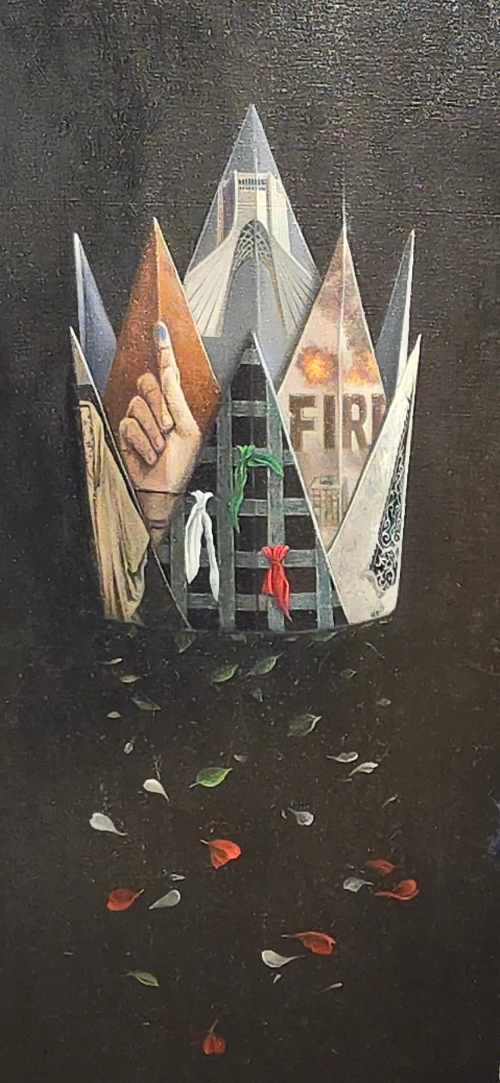
Elham,Heydarpour. 2025, Untitled, detail of lmage, Nian Gallery, oil on convas63 x 84 Cm, tehran, personal picture.
References:
1. Heidarpour, elham, interview with Firoozeh Saboori, march 2025.
2. Dondis, Danis.A. (1399/2020) Mabadi-ye Savad-e Basari [Principles of Visual Literacy], Translated by Masoud Sepehr. 58th edn. Tehran: Soroush, p. 75.
3. Moridi, Mohamad.Reza. (1398/2019) Ketab-e Honar-e Ejtemai [The Book of Social Art]. Tehran: Aban, pp.193–214.
4. John D. Clarke (1873_1933 U.S)
5. Dick Hebdige (1951 U.k)
6. Heidarpour, elham, your Iran catalogue, nian gallery, tehran, 2025.
7. Jung, Carl.Gustav. (1377/1998) Ensān va Symbol-hā-ye U (Man and His Symbols), Translated by Mahmoud Soltanieh. Tehran: Jami, p. 371.
Author: Firoozeh Sabouri
